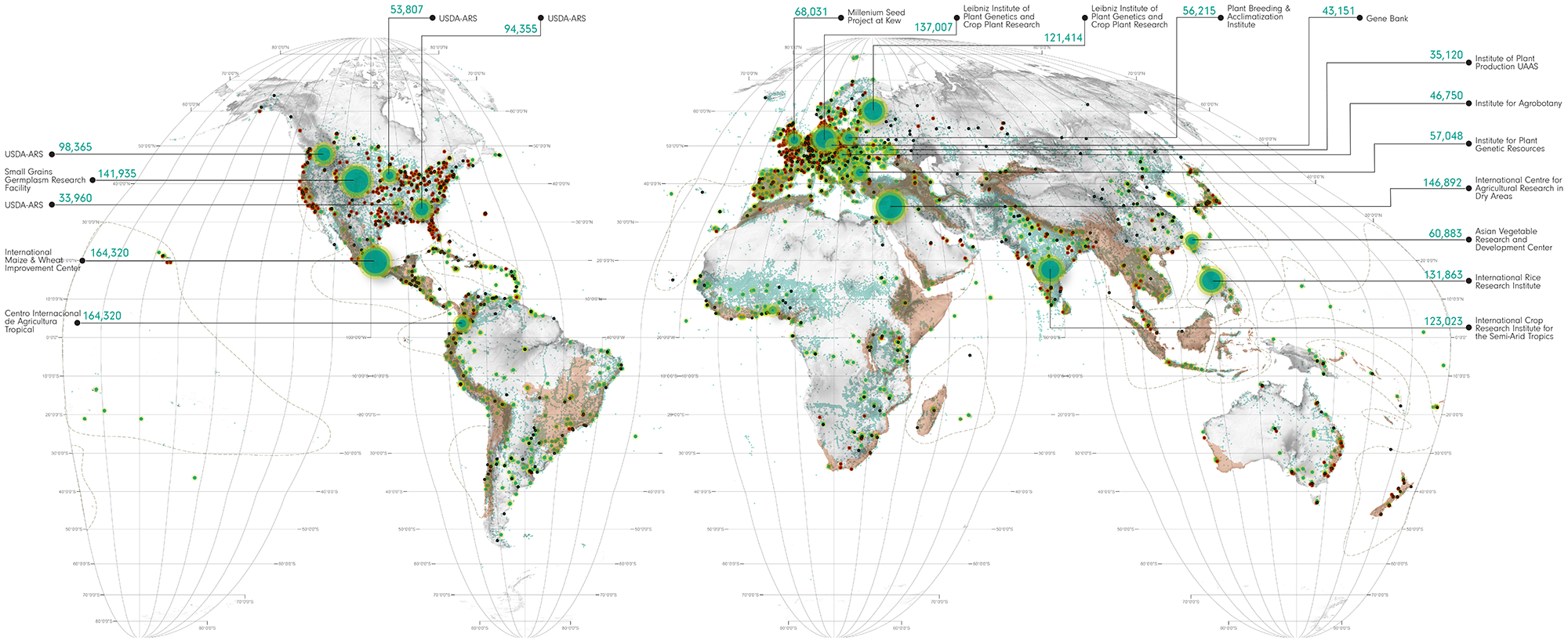Throughout history collections of animals and plants have expressed our contradictory relationship to the natural world with particular acuity. With the one hand they imprison and with the other they protect.
It is thought that there are approximately 8.7 million different species on earth. The practice of collecting and ordering them has a history stretching from Aristotle's first attempts at taxonomy to today's genetic archives. Despite this ongoing effort to know the world around us, over 85% of terrestrial life forms and over 90 % of marine life forms have not yet been classified. 1 Much of this as yet unknown biodiversity is likely to be in the hotspots, classified as such because what little we do know of these regions indicates exceptional and irreplaceable biological richness. The fact that certain plants and animals in these hotspots and elsewhere are threatened with immanent extinction provides contemporary zoos and botanic gardens with their raison d'être as both refuges and environmental public relations tools. Even at a glance this map shows the disturbing fact that while the hotspots are being drained of life, small zoological and botanical gardens seem to be flourishing.
1 Mora Camilo, et al., "How Many Species are There on Earth and in the Ocean?" PLoS Biology 9, no. 8 (2011): e1001127.
1. Major Gene Banks
Genesys: Gateway to Genetic Resources, "Statistical Overview: Holding Institutes," https://www.genesys-pgr.org/explore/overview?filter=%7B%7D (accessed October 24, 2015).
2. Accession Collection Sites
Genesys: Gateway to Genetic Resources, "Accession Map," https://www.genesys-pgr.org/explore/map?filter=%7B%7D (accessed July 23, 2016).
3. Botanical Gardens
Botanic Gardens Conservation International, "Global Distribution of Botanic Gardens," https://www.bgci.org/map.php (accessed October 24, 2015).
4. Zoos
D. A. Conde, et al., "An emerging role of zoos to conserve biodiversity," Science 331, no. 6023 (2011): 1390-1391. Available at WorldMap, "World_Zoos_ISIS_2010," https://worldmap.harvard.edu/data/geonode:isiszoos2010_hj3 (accessed July 23, 2016).
5. Hotspots
Critical Ecosystem Partnership Fund, "The Biodiversity Hotspots," http://www.cepf.net/resources/hotspots/pages/default.aspx (accessed July 1, 2014). Data made available under the Creative Commons BY-SA 4.0 License: https://creativecommons.org/licenses/by-sa/4.0/legalcode.





